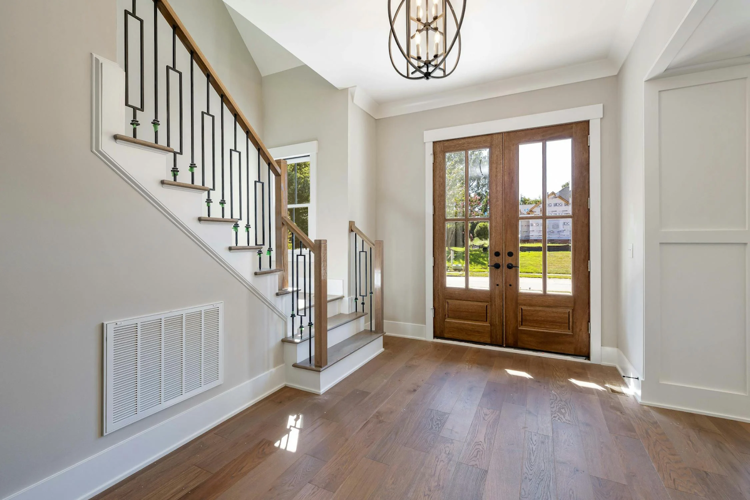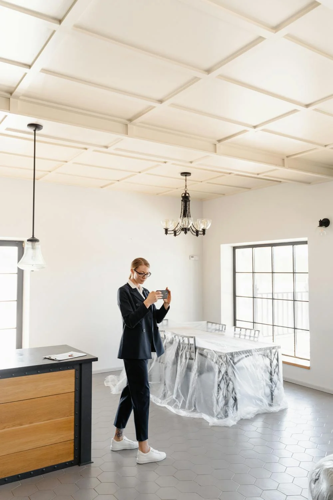Selling a home is as much about strategy as it is about presentation. Buyers don’t just purchase properties—they invest in futures, comfort, and lifestyles. In a crowded market, where dozens of similar homes compete for attention, making a lasting impression is critical. Staging serves as the bridge between a lived-in home and a show-ready space that appeals to a wide array of buyers. It sets the stage—literally and figuratively—for imagination and aspiration. A well-staged home invites potential buyers to see themselves in the space without distraction. And that kind of mental image often leads to quicker sales. Here’s why staging can be the difference between a stagnant listing and a swift, successful sale.

Highlighting Your Home's Best Features
When a house is lived in, it naturally accumulates layers of personality—photographs, knick-knacks, mismatched furniture, and bold design choices that may not reflect universal appeal. Staging strips back the personal while amplifying the architectural and functional strengths of the space. A staged home guides the eye toward high ceilings, wood flooring, or spacious layouts that might otherwise go unnoticed under clutter or outdated decor. Visual merchandising is key to helping a home put its best foot forward. Whether done physically or through virtual staging, showcasing each room's potential allows buyers to better understand how space can work for their own lives. This approach isn’t about deceiving—it's about perspective. The same empty room might feel cold or confusing to one buyer, but with a bit of curated styling, it becomes a functional home office or cozy reading nook. Staging makes the best parts of a home clear and accessible.
Creating a Strong First Impression
A buyer’s first impression typically begins long before stepping through the front door. Listing photos play a central role in drawing interest, and staged homes consistently photograph better. Online, where house-hunting often starts, a property has just seconds to capture attention. Rooms with well-placed furniture, neutral color palettes, and natural light appear more spacious, clean, and inviting in photographs.
Once a buyer arrives for a viewing, that first impression deepens. A staged entryway feels welcoming rather than awkward. Living rooms with appropriate scale furniture can suggest comfort and flow. Even small touches, like a vase of fresh flowers or a well-set dining table, signal care and quality. These impressions linger and influence how a buyer recalls the home later, especially after viewing multiple properties in one day.
Making It Easier for Buyers to Visualize Living There
One of the biggest challenges buyers face is seeing themselves in a space that doesn’t reflect their style or lifestyle. Unstaged homes often retain signs of the current owner’s preferences—strong wall colors, family photos, or hobby rooms that may not match a buyer’s needs. These elements can distract and make the home feel like someone else’s story.
Staging creates a neutral but stylish backdrop that makes visualization much easier. Rooms are defined clearly, furniture placement is purposeful, and distractions are minimized. The goal is not to show how *you* live in the home, but how *someone* could. By creating that mental bridge between what the home is and what it could become, staging shortens the emotional and practical distance between listing and offer.
Helping the Home Appear Move-In Ready
Buyers are naturally drawn to homes that look like they don’t need work. A staged home looks clean, well-maintained, and current. It signals that the property has been cared for, even if that impression is mostly a product of careful design and decluttering. When a home feels ready to live in, buyers are more likely to act quickly.
Small updates often accompany staging—fresh paint, minor repairs, or updated lighting. These changes collectively create the sense of a turn-key property. In contrast, an unstaged home may raise questions or invite hesitation. If buyers can spot areas that need attention, they may worry about hidden problems or the cost of making the home feel right. Staging addresses those concerns before they arise.
Justifying Asking Price and Reducing Time on Market
Perception heavily influences value. A well-presented home often appears worth more, even if the square footage and location match others in the area. Staging doesn’t change the bones of a house, but it transforms how buyers feel about what they see. That emotional response can make a strong case for an asking price that might otherwise seem ambitious.
Homes that are staged often sell faster, and often closer to their list price. Buyers who are excited and feel emotionally connected to a space are more likely to move quickly and confidently. They’re less inclined to negotiate hard on price when the home feels complete and competitive. Staging, then, is not merely about decor—it’s a sales tool that supports value and momentum.
Standing Out in a Competitive Market
When today’s buyers scroll through listings or drive past rows of near-identical facades, a staged interior can feel like a breath of fresh air. In a saturated neighborhood where multiple homes boast hardwood floors, granite countertops, and high ceilings, the way each room is arranged and presented becomes the deciding factor. Staging introduces a sense of narrative, inviting visitors to imagine weekend brunches in a sunlit dining area, late-evening movie nights in a cozy yet uncluttered living space, and peaceful mornings in a serene, neatly styled bedroom. Beyond simple furniture placement, thoughtful touches such as layering textiles, defining clear traffic patterns, and incorporating on-trend but widely appealing accessories draw attention away from any mundane or outdated elements. Online, those same design decisions translate into striking photographs and immersive virtual tours that hold a viewer’s gaze longer, prompting more inquiries and showing appointments. In person, a buyer will recall the warmth of a staged fireplace or the effortless flow from kitchen to garden, setting your listing apart in their memory when comparing notes after a busy weekend of viewings. By turning passive browsing into active engagement, staging gives your home a distinct voice that outshines others in any market.
Staging isn’t decoration—it’s strategic presentation. When done thoughtfully, it highlights strengths, removes doubts, and inspires confidence. It turns a house into something more than a place to live; it becomes a home in the eyes of potential buyers. Whether through physical or virtual transformation, the goal is to spark connection and accelerate decision-making. Selling quickly in a competitive market means understanding how buyers think—and showing them exactly what they’re looking for. A staged home doesn’t just look better. It sells faster.
Related Articles:




(0) comments
We welcome your comments
Log In
Post a comment as Guest
Keep it Clean. Please avoid obscene, vulgar, lewd, racist or sexually-oriented language.
PLEASE TURN OFF YOUR CAPS LOCK.
Don't Threaten. Threats of harming another person will not be tolerated.
Be Truthful. Don't knowingly lie about anyone or anything.
Be Nice. No racism, sexism or any sort of -ism that is degrading to another person.
Be Proactive. Use the 'Report' link on each comment to let us know of abusive posts.
Share with Us. We'd love to hear eyewitness accounts, the history behind an article.